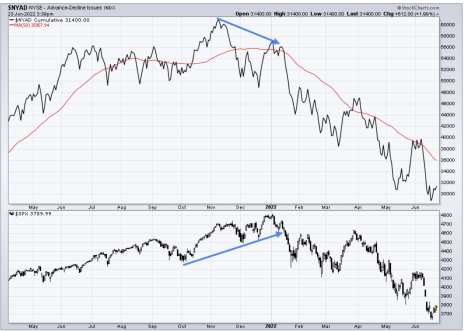At its most basic level, technical analysis is a study of investor behavior and how it creates the booms and busts and trends we see at work all the time in the market. One of the legends of technical analysis is a man named Bob Farrell, who led technical analysis for Merrill Lynch for 45 years, until 2002, and has devised some interesting market rules. He’s now a retiree in Florida, but you never really retire from market watching – in April, he suggested on a podcast the bear market could cut 30% from values, which would push the S&P 500 to under 3,200. That may not happen of course, but it’s a reminder to stay smart in times like these.
Here are Farrell’s 10 market rules, which he first put to paper in the late 1990s, when the dotcom boom was well underway.
[text_ad]
Bob Farrell’s 10 Market Rules
- Markets tend to return to the mean over time. Trends that get overextended in one direction or the other will return to their long-term average at some point. The mean itself can trend – indeed, stocks have been in an uptrend since WWII – but extreme variations away from the average get reversed.
- Excess in one direction will lead to an opposite excess in the other direction. Probably the simplest to recognize – after all, markets and sectors boom then bust all the time. Solar stocks got far too expensive in 2007, for example. By 2009, they were far too cheap.
- There are no new eras – excesses are never permanent. When everyone is piling into the new hot thing – meme stocks, NFTs, some new crypto approach – it’s not hard to find proclamations of “paradigm change” and “this time it’s different.”
- Exponentially rapid rising or falling markets usually go farther than you think –but they do not correct by going sideways. The most interesting to me of Farrell’s market rules is his assertion sideways trading doesn’t correct market excesses. I want to argue against it, but then I can’t think of any excessive market that didn’t end with a reversal.
- The public buys the most at the top and the least at the bottom. I’ve always hated the snobbishness inherent on the tales Wall Streeters cite, about “knowing it was time to sell when my shoeshine guy gave me a stock tip.” On the other hand, the pandemic market featured too many examples of new investors maxing out credit lines to buy a hot security with Robinhood.
- Fear and greed are stronger than long-term resolve. Everyone has felt this, probably because of the first part of Rule 4 – market excesses tend to outlast most people’s imagined worst-case scenario. And when things are great, we tend to embrace new-era thinking.
- Markets are strongest when they are broad and weakest when they narrow to a handful of blue-chip names. The chart of New York Stock Exchange advanced-decline line for the past year tells us this remains true. See how the bottom chart, the S&P 500, was making new highs into 2022, while the top chart, the cumulative number of NYSE stocks advancing or declining each day, a breadth indicator, started on a downtrend at the same time?
- Bear markets have three stages – sharp down, reflexive rebound, then drawn-out fundamental downtrend. Determining where we are right now is what occupies a lot of my time. I see hints we’re in the third phase, potentially looking to turn out again – but there is work to be done.
- When all the experts and forecasters agree, something else is going to happen. Recall it wasn’t long ago everyone seemed in agreement negative interest rates were coming to the U.S.
- Bull markets are more fun than bear markets. I think Farrell recognized that it’s easier to make money in a bull market when people are optimistic and, to my experience, bullish technical signals are more reliable. Thankfully, historically the stock market is bullish more than it’s not, by about a three-to-one ratio. The bulls will be running again one day.
Any other market rules you try and live by? Feel free to share them in the comments below!
[author_ad]



